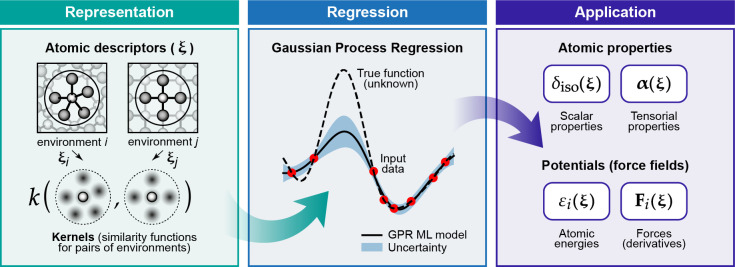Figure 1.
Overview of central concepts in Gaussian process regression (GPR) machine-learning models of atomistic properties. Left: The models discussed in the present review are based on atomistic structure, and therefore, they require a suitable representation of atomic environments up to a cutoff. The neighborhood is “encoded” using a descriptor vector, ξ, and a kernel function, k, which is used to evaluate the similarity of two atomic environments. Center: In the regression task, the goal is to infer an unknown function from a limited number of observations or input data (section 2). The result, in GPR, is a function with quantifiable uncertainty. Right: Applications of GPR. There are two main classes within the scope of the present review. The first class of applications is the fitting of atomic properties (section 3): these can be scalar, such as the isotropic chemical shift in NMR, δiso, or vectors or higher-order tensors, such as the polarizability, α. The second class of applications is the construction of interatomic potentials or force fields (section 4), which describe atomic energies, εi , as well as interatomic forces, Fi. All these properties are fitted as functions of the descriptor, ξ. The drawings on the left are adapted from ref (18). Adapted by permission of The Royal Society of Chemistry. Copyright 2020 The Royal Society of Chemistry.

